Silverstone supports four NVMe M.2 SSDs in a single-slot PCIe card
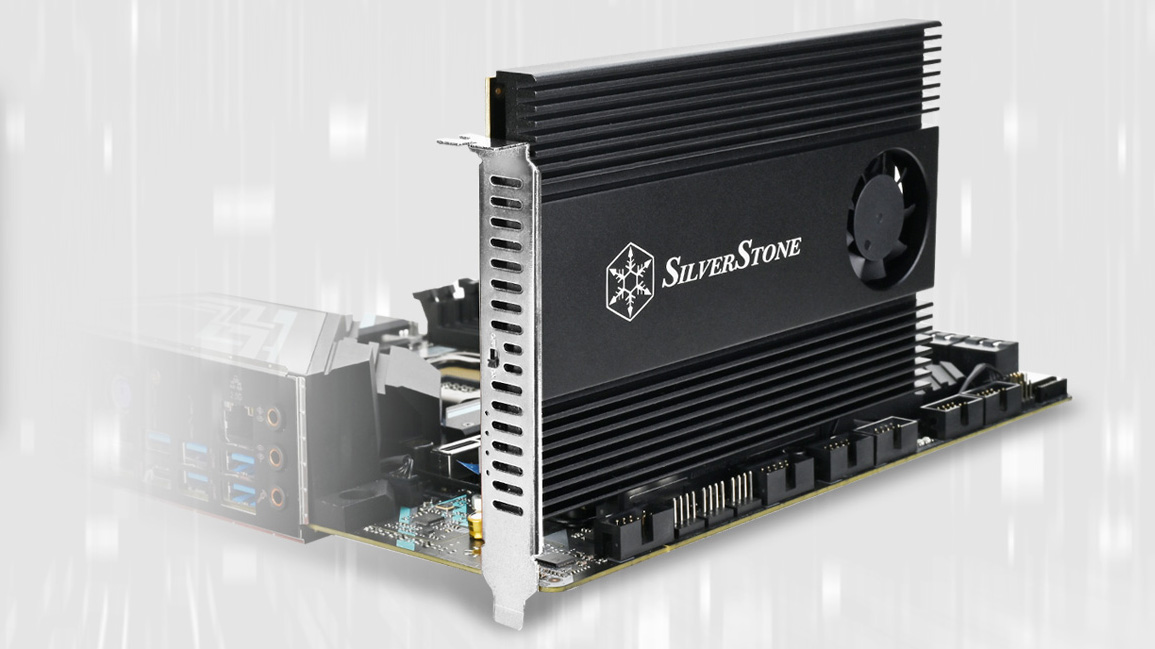
Silverstone has released the ECM40, a PCIe 4.0 add-in card that supports up to four M.2 SSDs. The add-in card supports 2230, 2242, 2260, and 2280 M.2 SSD form factors and features active cooling.
The ECM40 is a single-slot card powered by a PCIe x16 interface. The x16 slot feeds four PCIe lanes to each of the four M.2 slots. Users who want to use this M.2 slot will need to ensure their host machine supports PCIe bifurcation, so the PCIe lanes can be split into 4 x 4 or 4 x 2 configurations.
To keep the drives cool, Silverstone employs a 40 x 40mm dual ball-bearing cooling fan that sits on the edge of the card, attached to a giant heatsink. The heatsink serves as both the cooler and cover for the card, featuring four thermal pads — one for each M.2 slot. The cooling fan can also been switched on and off manually with a switch on the PCIe bracket, allowing for passive operation when necessary.
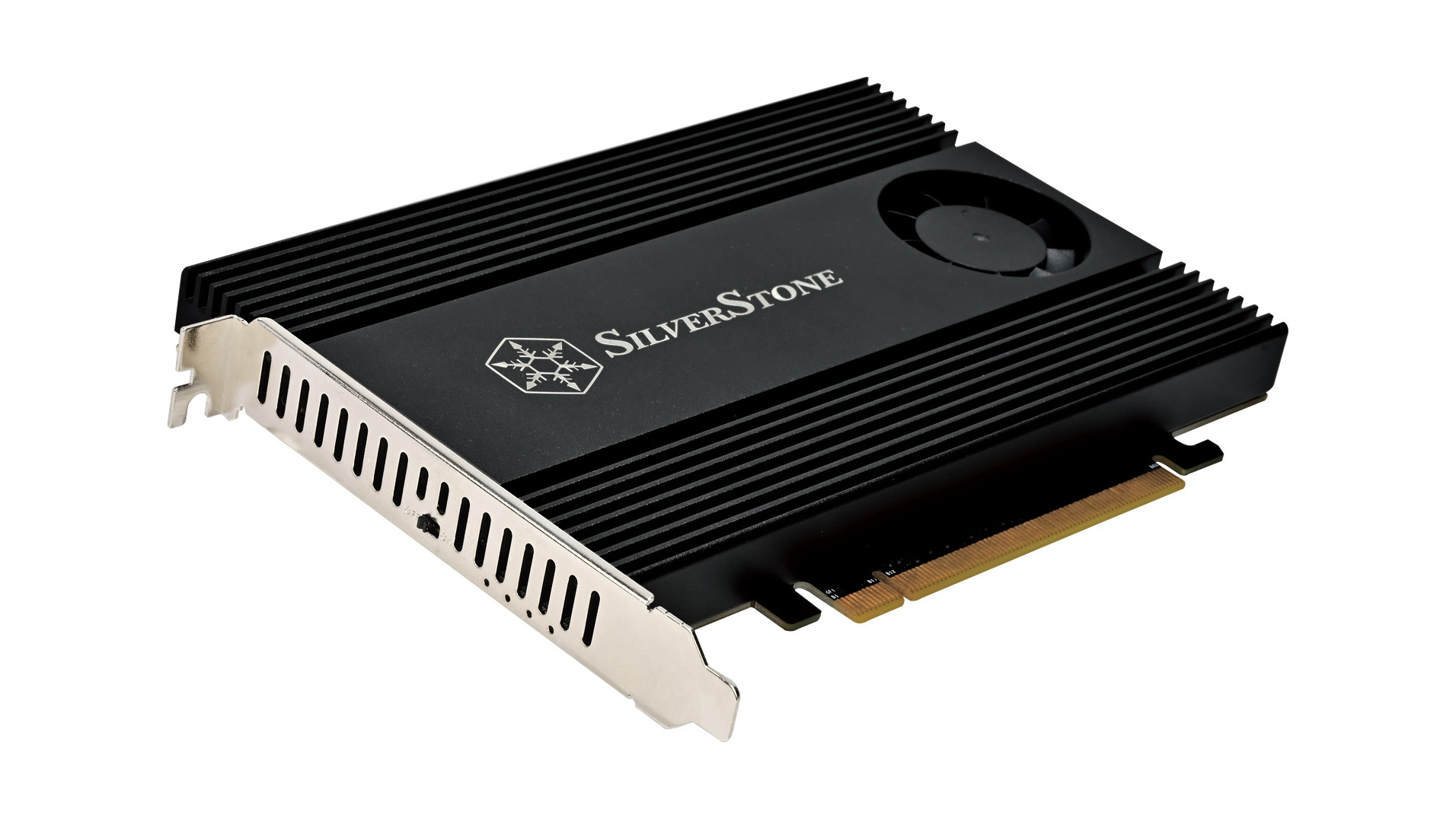
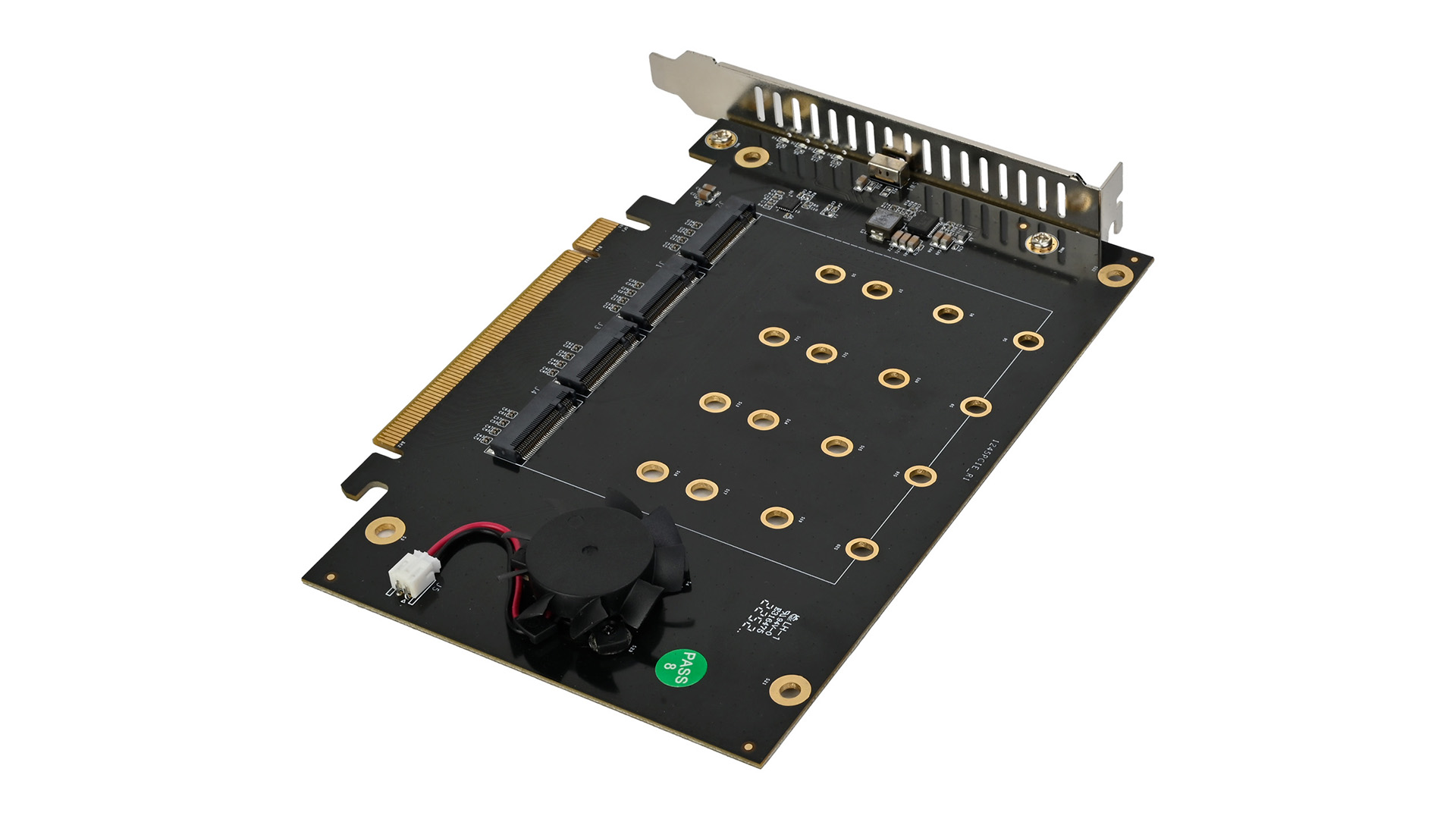
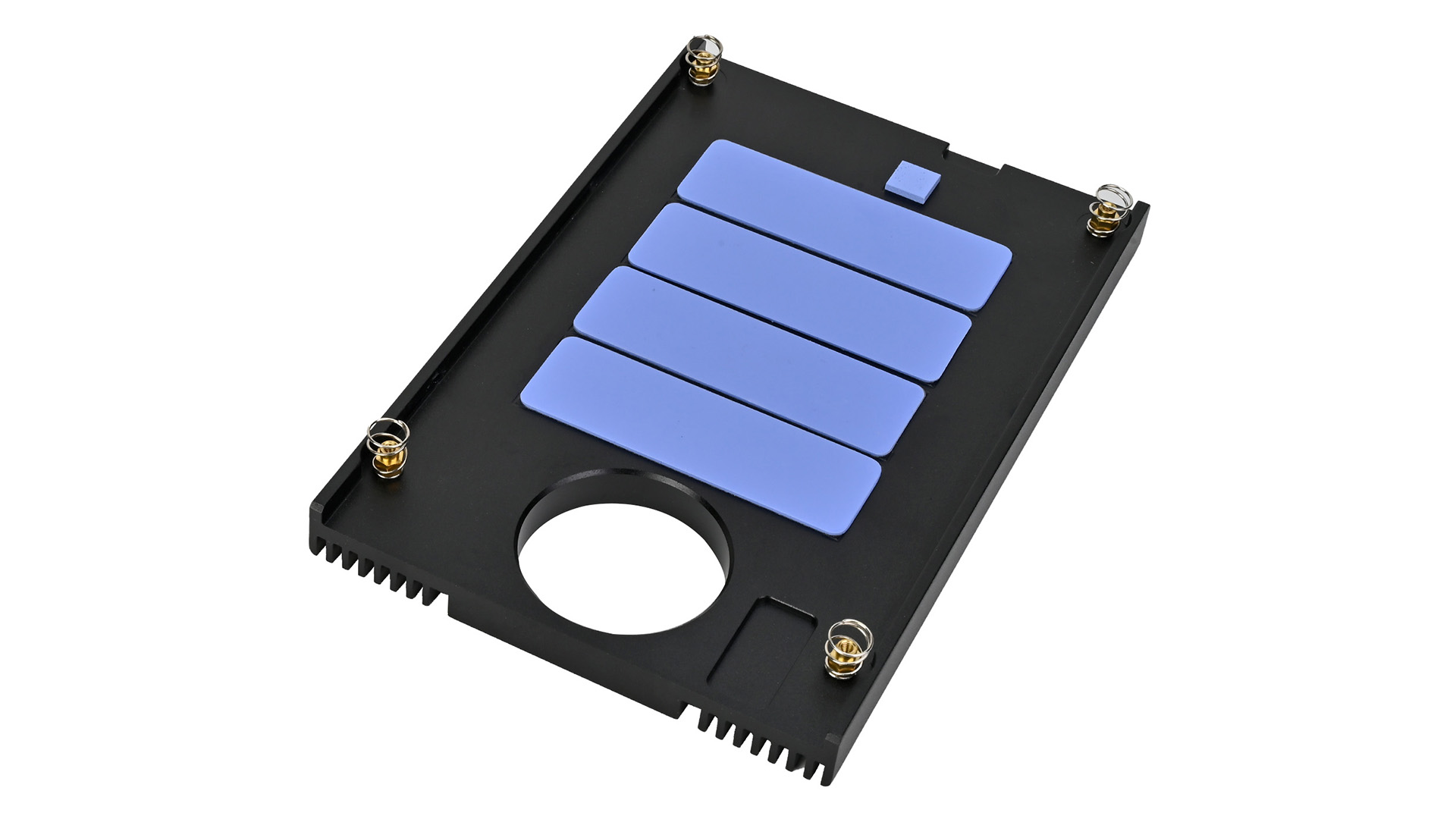
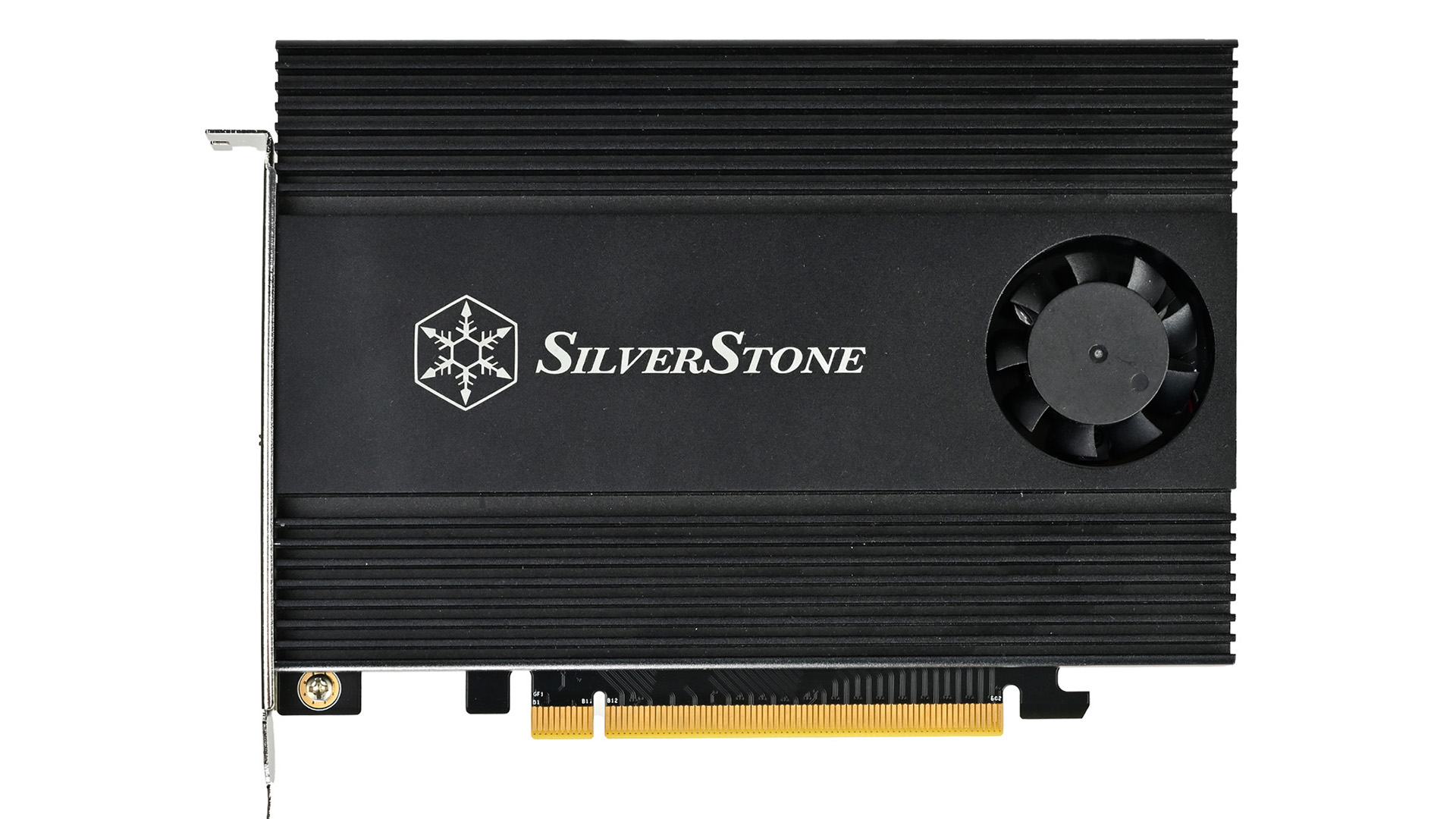
The add-in card supports USAP and TRIM functionality, however Silverstone confirms that the card does not support hardware RAID functionality. The card measures 7.13 x 5.8 x 0.85 inches (181 x 147.74 x 21.59mm), which is around the size of budget-friendly graphics cards. The heatsink measures 6.61 x 4.3 x 0.56 inches (168 x 109.3 x 14.2mm).
Silverstone benchmarked the ECM40 with a Ryzen 9 5900X test bed featuring an ASRock X570 Pro4 motherboard, 8GB of DDR4-2133 memory, and a single Kingston Fury 2T SSD. The card was tested in CrystalDiskMark and showed a maximum read speed of 7,351.64 MB/s and a write speed of 6,845.57 MB/s.
The ECM40 provides users with a way to easily expand their PC's M.2 storage capacity with its four integrated M.2 slots. A card like this will most likely be advantageous in workstation systems or systems without a graphics card due to the card's PCIe lane requirements. However, the ECM40 can work with just one or two M.2 SSDs installed, which can make it functional in mainstream AM5 or LGA1700 systems that use a graphics card. Pricing and availability are unknown at this time.
Get Tom's Hardware's best news and in-depth reviews, straight to your inbox.

Aaron Klotz is a contributing writer for Tom’s Hardware, covering news related to computer hardware such as CPUs, and graphics cards.
-
8086 Motherboard manufacturers pay attention:Reply
LESS onboard M.2 slots and more PCI-e x16 slots for cards like this to install your m.2 drives on to. -
Alvar "Miles" Udell Aye given the size of modern GPUs it would be better for motherboard manufacturers to wire the very top most PCIe slot, right one above the GPU slot, with 16 lanes for use with an AIC for M.2 drives. Not only would they run cooler, but also be far easier to change out or add to.Reply -
ezst036 Who needs this product?Reply
Motherboards manufacturers currently put 19 NVME slots on their boards taking up space that would've formerly been used by PCI-E slots.
EDIT: Thought about it for a few minutes, the higher end boards are often times less likely to have very many slots and more NVME, and usually are the eye candy that receive reviews. Mid-end boards sometimes have more slots. But even if you have 3 16x slots and remainder 1xs it might still make more sense to buy two 1x or 3 1x NVME pci-e cards than this one 16x.
Additionally there's also the maths involved. A nice board but not top of the line plus the cost of this card and you're left with probably the same $price$ as a highest end board that has 6 NVME ports integrated onto it, so why not just buy the better board if you need that many drives. I'm still not seeing who needs this product.
The root problem is that board manufacturers often do not put enough 4x, 8x, or 16x slots on their boards. They force us to pick only boards with 2-3 at max slots, and then the remainders are all 1xers. (or absent altogether) -
thestryker These are worthless for most consumers as it can only be used to maximum effect on workstation platforms or AMD systems that don't need a video card.Reply
Unless AMD and Intel can be convinced to give more lanes or better lane splits that's where these will stay. PCIe switches are much too expensive once you get past PCIe 3.0 (and even these aren't cheap) so they aren't a viable solution. -
Notton Reply
They do that already.8086 said:Motherboard manufacturers pay attention:
LESS onboard M.2 slots and more PCI-e x16 slots for cards like this to install your m.2 drives on to.
These are for HEDT, like the Thread Ripper Pro. Asus sells a Pro Sage WRX80E-SAGE, which has 7* x16 PCIe slots.ezst036 said:Who needs this product?
Motherboards manufacturers currently put 19 NVME slots on their boards taking up space that would've formerly been used by PCI-E slots.
TR Pro actually supports bifurcation, unlike AM5 consumer mobos.
In fact, I haven't seen an WRX80 mobo that doesn't have 7* x16 slots. -
Ogotai Reply
actually, am5 does seem to support bifurcation, the Asus X670e Pro art does, it seems amd allows it, but the mobo make has to enable it...Notton said:TR Pro actually supports bifurcation, unlike AM5 consumer mobos. -
Stomx When one 8 TB SSD sometimes cost $1000 while 4 SSDs by 2TB each (also 8 TB in total) cost $500 using such adapter has perfect sense. Or $1000 can buy you even 16TB total nowadays. Plus such adapter has excellent cooling which will save your stored bits intact for way more substantial time as the retention time strongly depends on temperatureReply -
kyzarvs Reply
Without hardware RAID, there's no point in a 4-drive expansion device. Software RAID will hamper performance and who in their right mind would add 4 drives in JBOD or as four different volumes?Notton said:They do that already.
These are for HEDT, like the Thread Ripper Pro. Asus sells a Pro Sage WRX80E-SAGE, which has 7* x16 PCIe slots.
TR Pro actually supports bifurcation, unlike AM5 consumer mobos.
In fact, I haven't seen an WRX80 mobo that doesn't have 7* x16 slots.